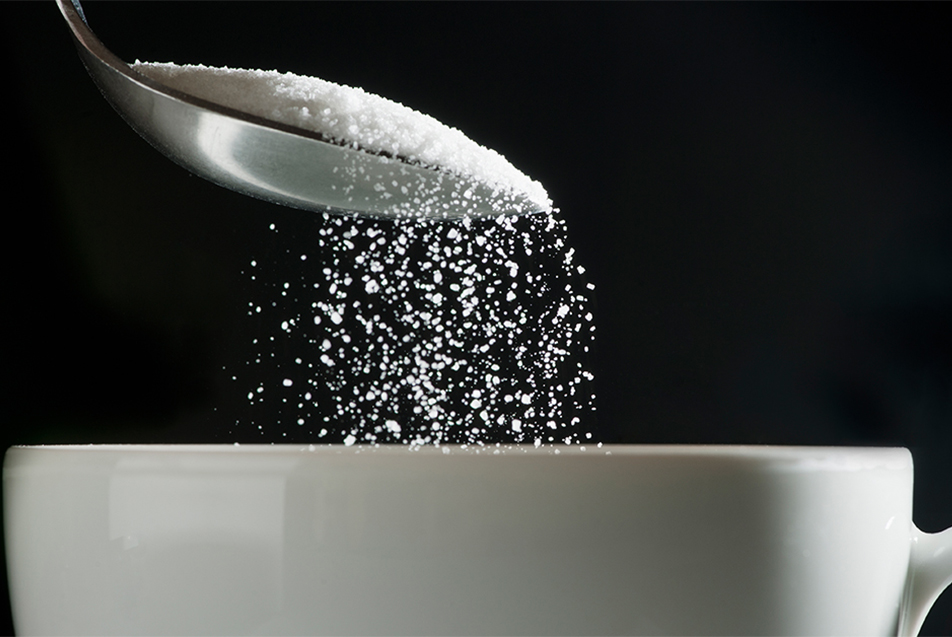
Angela LaSalle, MD, ABFM, ABoIM, Medical Director, Parkview Physician's Group - Integrative Medicine, talks about the frightening effects of sugar and signs of insulin resistance.
Here it comes again … the afternoon brain fog. Your heavy eyelids struggle to focus back at the beginning of the same paragraph you’ve read twice already. “I need a break,” your lethargic brain says. And you wander into the break room where your co-worker’s leftover birthday cake sits on the counter by the coffee pot. You know you shouldn’t. After all, you had a small piece at lunch with the rest of the team. Yet your struggling brain is crying out, ”It will give me some energy, right?”
Wrong.
In fact, the cake and the high carb lunch may be part of the reason for the afternoon energy slump. While it is true that glucose (sugar) is the primary fuel for the brain cells, too much sugar can give you the opposite effect. Brain Derived Neurotropic Factor (BDNF) is a substance that helps the brain increase and maintain its connections and affects neurotransmitter levels. Neurotransmitters are chemicals like dopamine, serotonin, Acetylcholine, Norepinephrine and GABA. These help the brain with processing speed, attention and mood.
So we see that sugar can affect your brain’s ability to process and decrease your memory, but can it make you sad too? You bet! Depression has a definite link to sugar consumption.
As many of us know, brains have minds of their own when it comes to sugar, and it is tough to fight back against those cravings. However, a healthy brain means a healthy body. Keeping a lookout for those habits that throw your brain under the bus can go a long way in helping to improve your energy and your moods. And don’t forget … your memory, too!
Is it sugar addiction?
As a doctor who helps clients with weight loss and healthy eating, it is not uncommon for me to hear from a patient, “Hey Doc, I am really struggling. I think I might be addicted to sugar.” This may actually be a sign of significant insulin resistance. Remember that insulin helps sugar get into the cell so that energy can be produced and you brain needs a steady supply of glucose to maintain its function. If the brain senses that it isn’t getting enough fuel, it sounds the alarm by activating the autonomic nervous system.
Understanding insulin resistance
Long term effects of a high sugar diet are many. Diabetes and obesity are just the tip of the iceberg. In fact, a high sugar diet has been implicated in many other severe and chronic diseases like heart disease, stroke, hypertension, arthritis, autoimmune diseases and even cancer. The common denominator here is inflammation and is caused by the combination of higher blood sugars and excess insulin being produced by your body.
Insulin is a hormone produced by the beta cells of the pancreas in your abdomen. These are the only cells in your body that produce insulin. If you lose them, like with an autoimmune disease, like type 1 diabetes, your body cannot get glucose into your cells. We must have insulin to live. However, many people have an issue with their cells not listening well to the insulin. This is type 2 diabetes.
Here’s an easier way to understand this:
Picture a large office building in New York with a doorman with a shiny hat standing at the entrance. When Miss Glucose arrives from the traffic of the blood stream, he quickly, with ease, swings open the door so she can sweep into her meeting inside the cell that is all about energy production. Glucose can’t open the door by herself, so if there are no doormen, she can’t get in. This is type 1 diabetes.
In insulin resistance, pretend the hinges on the door are broken. Now, instead of one doorman, it takes 3 or 4 molecules of insulin to do the same work to open the door. In the early stages, the doormen are able to get the door open in time, so there is no delay for Miss Glucose. However, as time goes on and the hinges break down more and more, Glucose starts to collect on the sidewalk. This is when we begin to see the blood sugars get higher on your blood tests. Eventually the glucose gets high enough that we call this type 2 diabetes. However, note that in the early stages it is just the doormen that are collecting in the system…the insulin molecules.
The net result of too many insulin doormen is an increase in the activity of our fat cells…especially the fat in and around our belly. This type of fat actually produces hormones and substances that affect our immune system and put it in overdrive. You see, inflammation is actually part of our healing mechanisms, yet if it gets turned on too aggressively, it actually works against us and causes our tissues to be damaged. The result is we may have issues with weight gain, joint pain, and changes in our blood vessels which then, in turn, cause pain or diseases like heart disease and diabetes.
Signs you are experiencing insulin resistance:
- Weight gain around the middle
- Low blood sugar symptoms like feeling weak or irritable if you miss a meal or eat sugar
- High blood pressure
- High cholesterol
- Abnormally high liver enzymes on blood work
- Darkening of skin in your armpits, groin fold at top of leg or behind your neck
- Facial hair, or thinning of scalp hair
- Fasting blood sugar greater than 100
- Hemoglobin A1C higher than 5.5 (gives a 3-month average of your blood sugars)
- Sleep disruptions, especially waking around 3 am.
If you are noticing any of these symptoms, or if you have a family history of diabetes, talk to your doctor about checking a Hemoglobin A1C and a fasting insulin level. Studies have shown that early intervention with changes in diet and exercise can be as effective as prescription medication to improve your body’s sensitivity to the insulin signal. Adding some weight training to your exercise can go a long way to help improve insulin’s capacity to get glucose into the cell. You might say that it is like putting WD40 on the broken hinges of the doors of the insulin receptors and it improves your body’s ability to get glucose into the cell.
If needed, your doctor can help you with medications, supplements and diet changes that can help to overcome the resistance that your cells have to your body’s insulin signal.



